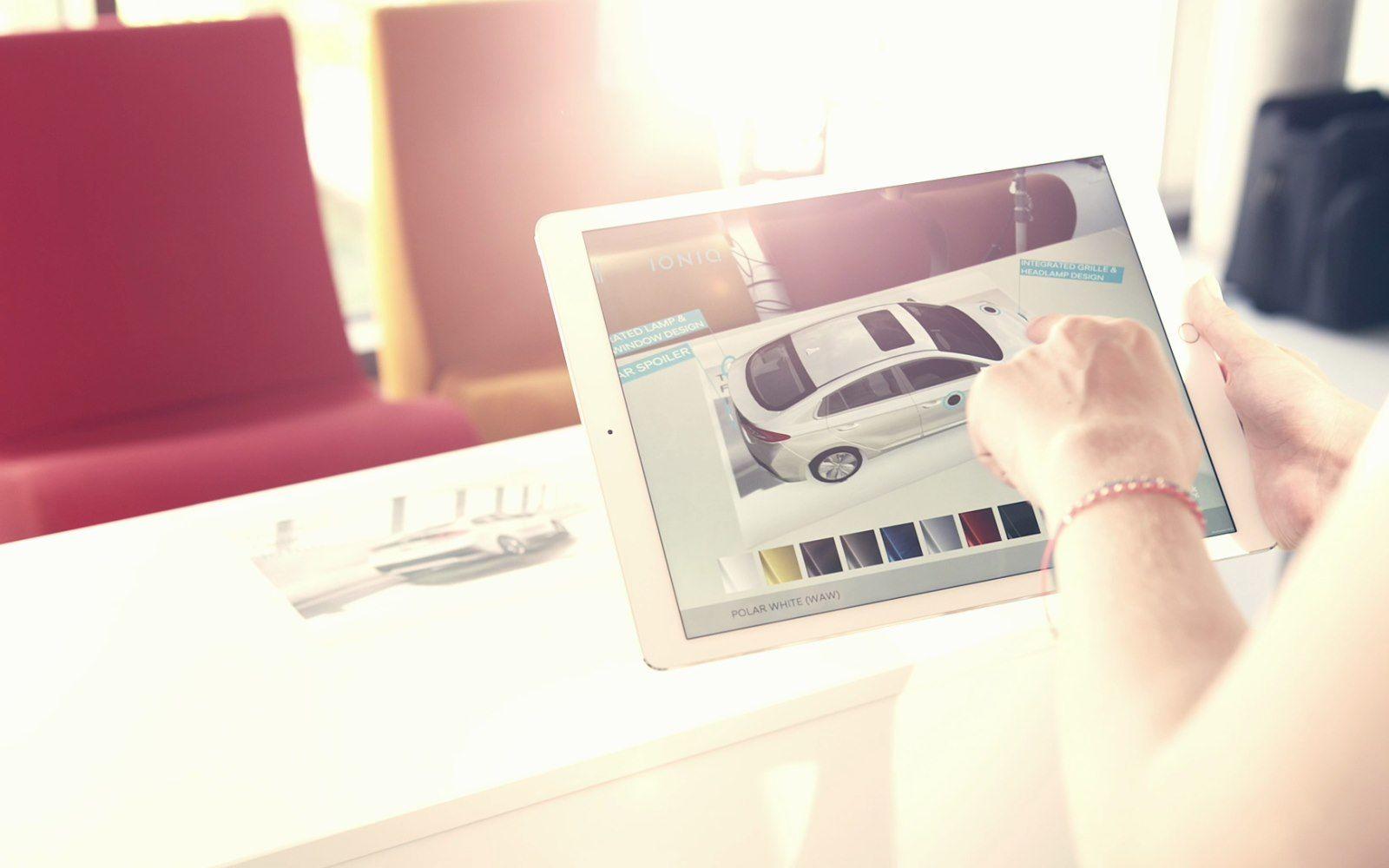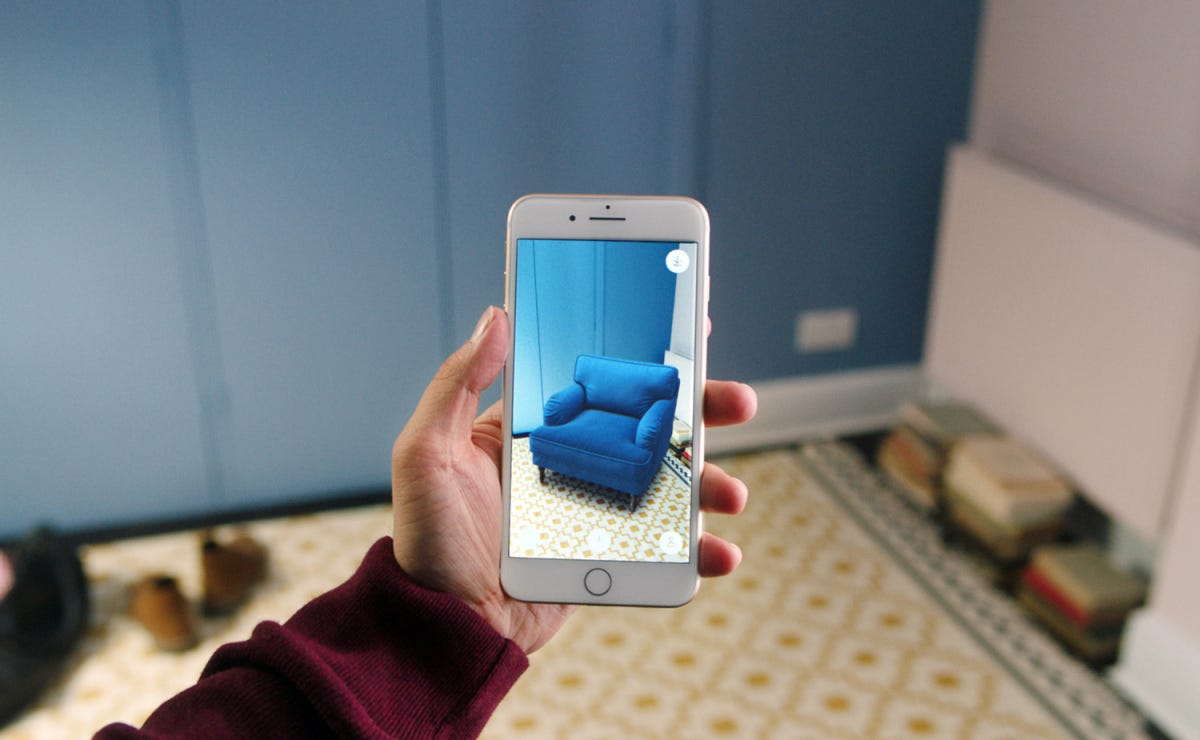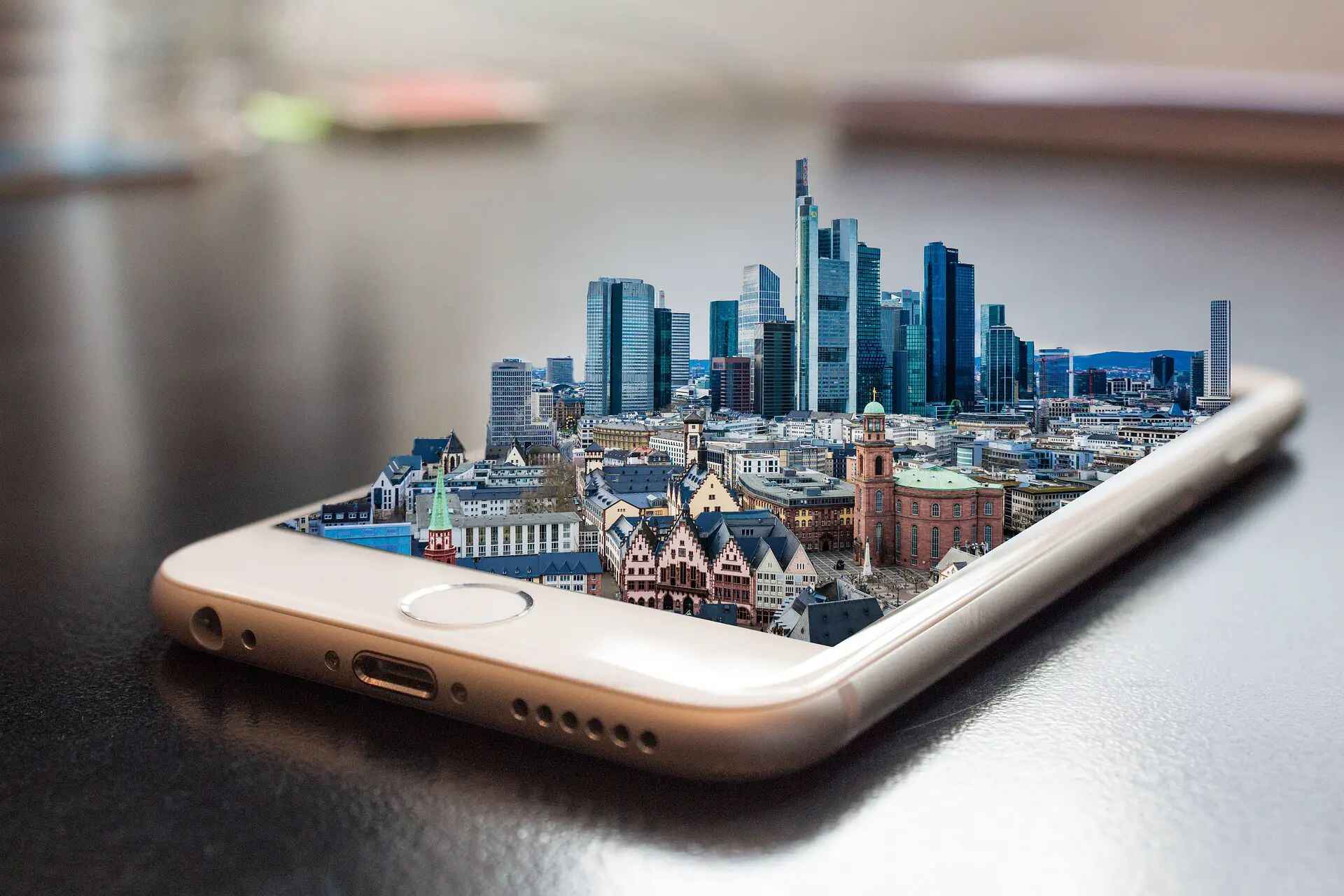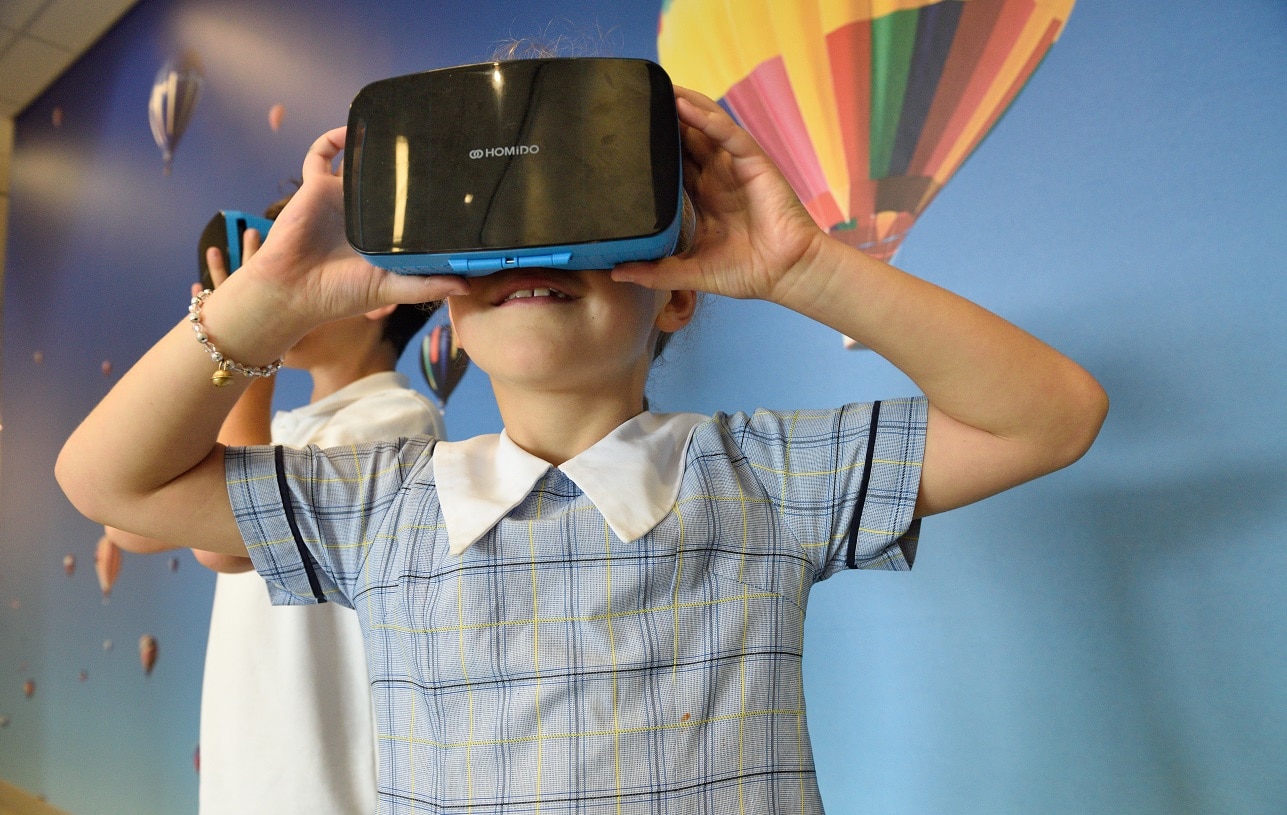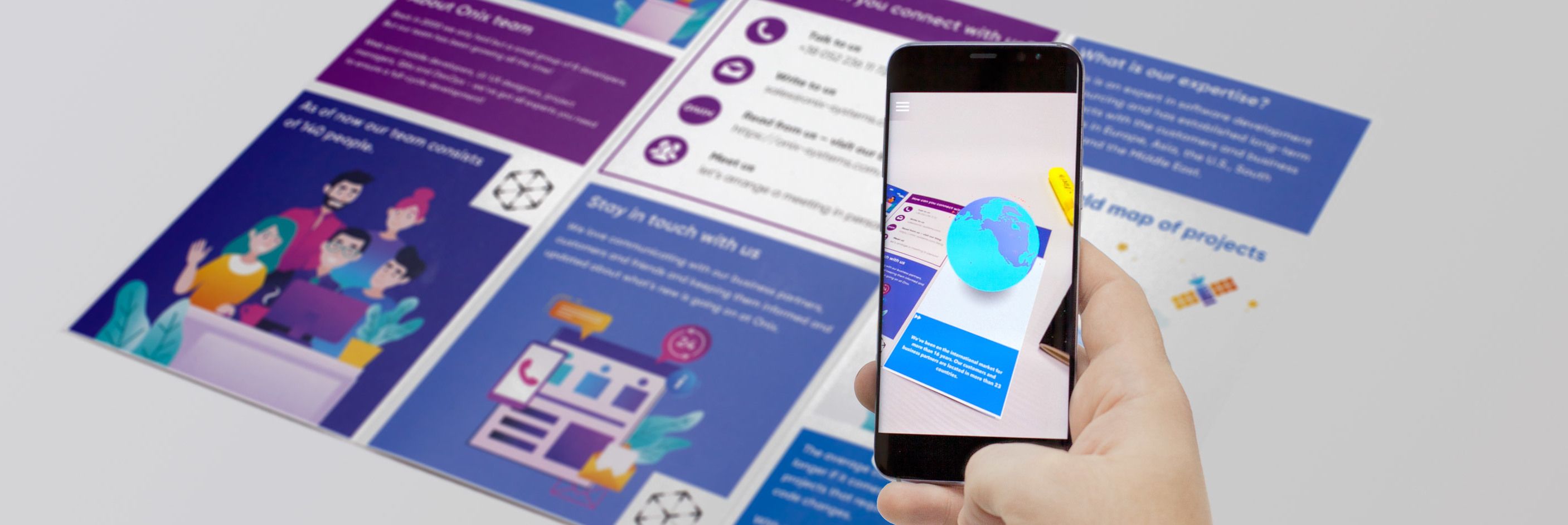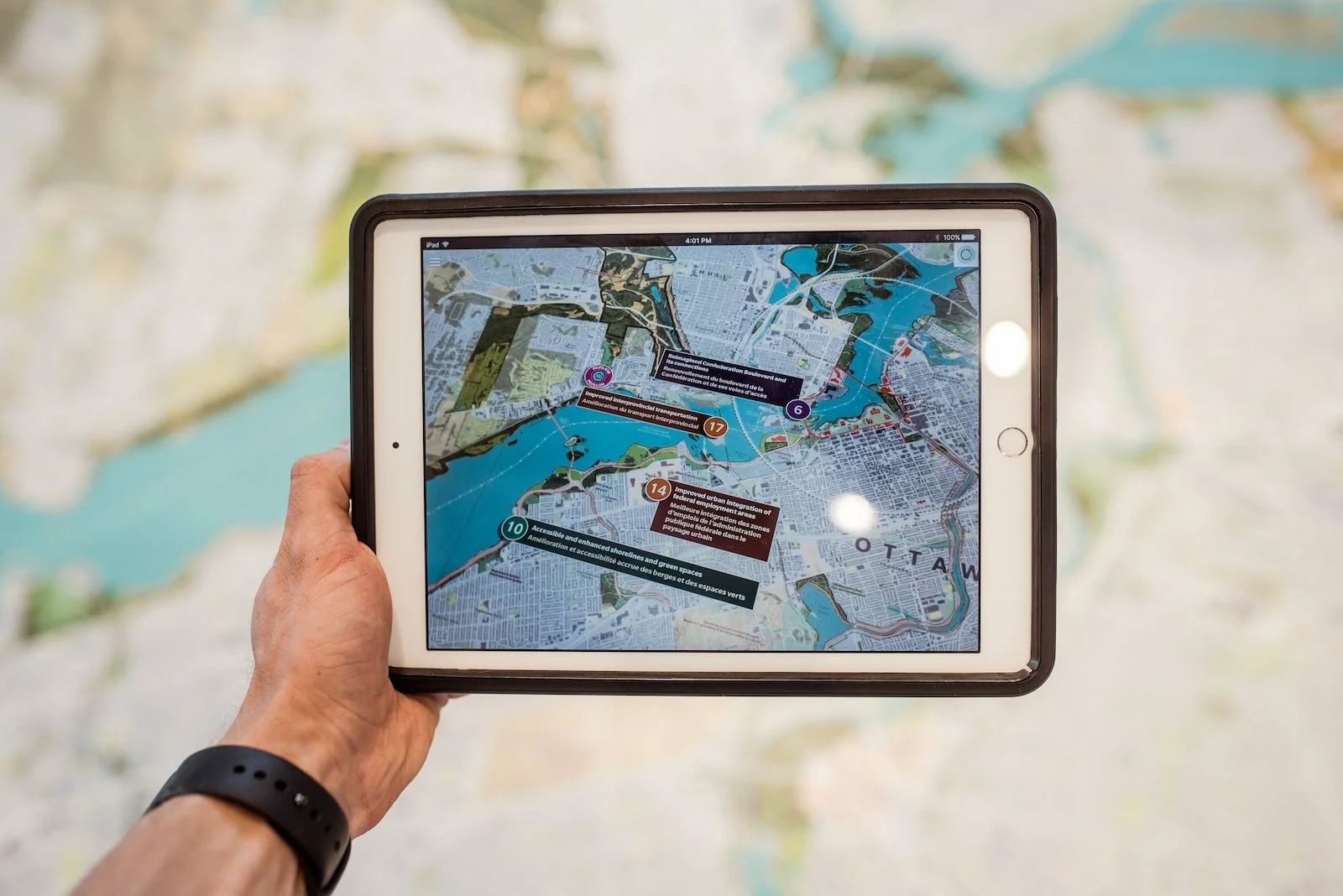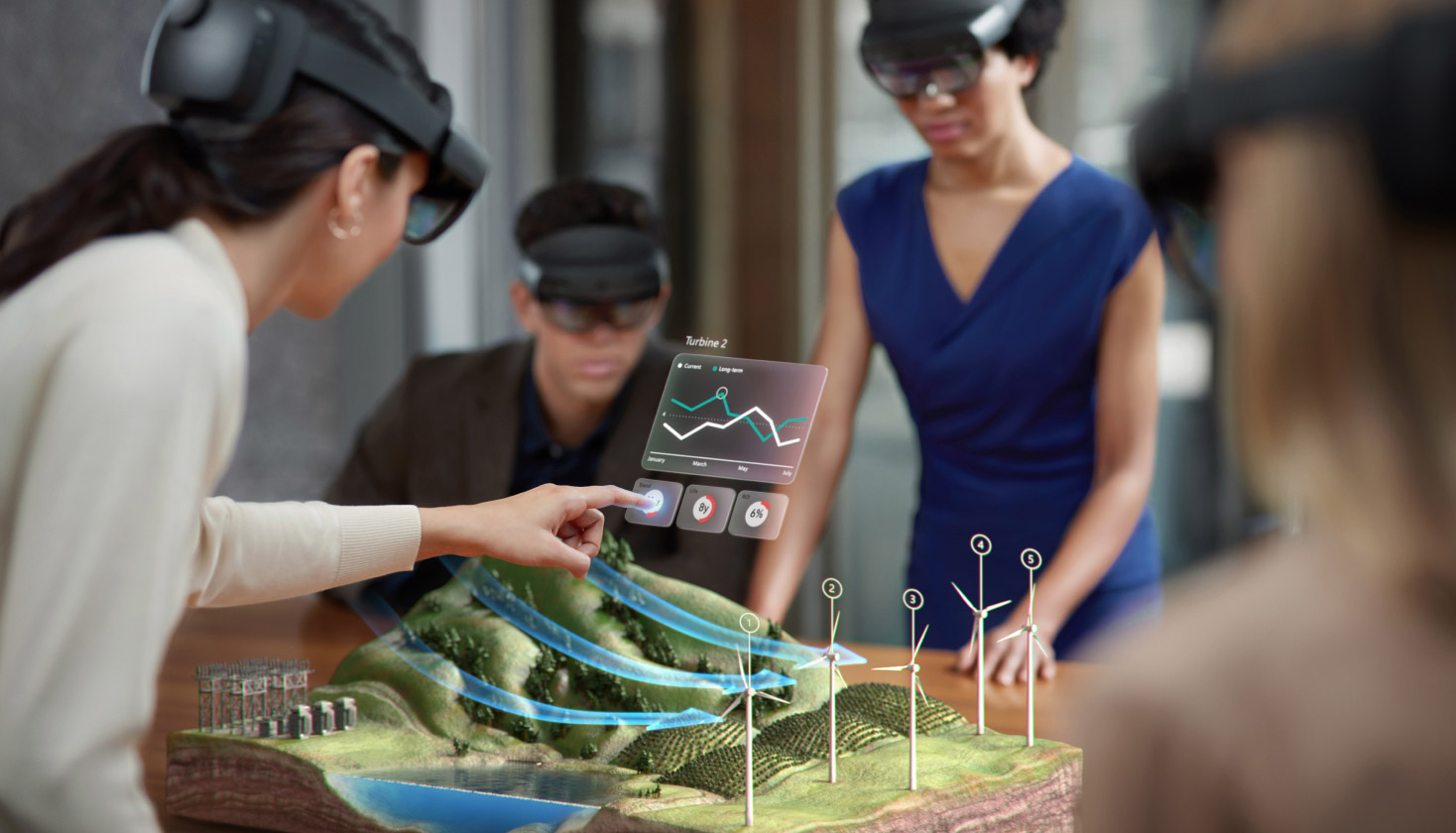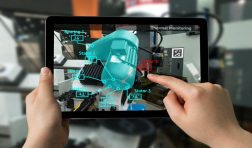Introduction
Welcome to the fascinating world of augmented reality (AR) app development. With the increasing ubiquity of smartphones and tablets, AR technology has gained enormous popularity for creating immersive and interactive user experiences. Whether you are a game developer, a business owner, or simply curious about new technologies, learning how to make an augmented reality app can open up a realm of possibilities.
In this article, we will guide you through the process of developing your own augmented reality app. From defining your app’s purpose to implementing the AR functionality, we will cover each step in detail. By the end of this guide, you will have a strong understanding of the key elements and considerations involved in creating a successful AR app.
Augmented reality is a technology that overlays virtual content onto the real world, enhancing the user’s perception and interaction with their surroundings. It works by combining the real-time camera feed of a device with computer-generated graphics or information. This enables users to see digital objects or information superimposed on the physical world in real-time.
The applications of AR are wide-ranging and diverse. From gaming and entertainment to education, business, and even art, there is virtually no limit to what can be accomplished with this technology. AR apps can provide immersive gaming experiences, enhance learning through interactive visualizations, improve customer engagement with virtual try-on features, and much more.
Creating an augmented reality app may seem like a complex task, but with the right approach and tools, it can be an exciting and rewarding journey. By following the steps outlined in this guide, you will gain the knowledge and skills needed to bring your ideas to life.
So let’s embark on this AR adventure together and unlock the potential of augmented reality app development!
Understanding Augmented Reality
Before diving into the process of developing an augmented reality app, it’s essential to have a solid understanding of what augmented reality is and how it works. Augmented reality is a technology that enhances our perception of the real world by overlaying digital content onto it, creating an immersive and interactive experience.
Unlike virtual reality, which completely replaces the real world with a simulated environment, augmented reality combines virtual elements with the real world. It allows users to see and interact with virtual objects or information while still being aware of their physical surroundings.
AR apps use various technologies to achieve this blending of the real and virtual worlds. One common technique is marker-based AR, where specific markers or objects act as triggers for displaying the virtual content. These markers can be anything from printed images to physical objects.
Another approach is markerless AR, often referred to as location-based or GPS-based AR. It uses the device’s GPS, accelerometer, compass, and other sensors to overlay content based on the user’s location and orientation. Markerless AR is useful for creating location-specific experiences like navigation apps or real estate visualizations.
Furthermore, AR apps utilize computer vision algorithms and image recognition to detect and track the real-world environment. This technology allows the app to understand the user’s surroundings and accurately place virtual objects in the right positions and orientations.
Understanding the different types of AR experiences is also crucial. There are three main types: marker-based AR, location-based AR, and projection-based AR. Each type offers unique possibilities and challenges, depending on the app’s purpose and requirements.
Marker-based AR provides precise tracking and alignment by using specific markers or patterns. This type is commonly used in gaming and marketing applications, where virtual content is attached to specific physical objects or images.
Location-based AR relies on the device’s GPS and other sensors to overlay content based on the user’s real-world location. This type is commonly used in navigation apps, tour guides, and location-specific information.
Projection-based AR involves projecting virtual content onto real-world surfaces, creating dynamic and interactive displays. This type is often seen in large-scale installations, museums, and artistic performances.
By understanding the principles and types of augmented reality, you can better conceptualize and plan your AR app development process. With this knowledge in hand, let’s move on to the next step: defining your app’s purpose.
Step 1: Defining Your App’s Purpose
Defining the purpose and objectives of your augmented reality app is a crucial first step in the development process. Clearly understanding what you want to achieve will help in making informed decisions and shaping the direction of your app.
Start by identifying the problem or need that your app will address. Are you creating a game, an educational tool, a marketing tool, or an informative app? Understanding the purpose of your app will help you narrow down its features and functionalities.
Consider your target audience and their specific needs. Are you targeting children, students, professionals, or a specific industry? Knowing your audience will assist in tailoring the app’s content and user experience to their preferences and expectations.
Once you have a clear idea of your target audience and their needs, think about the value that your app will provide. What unique features or benefits will it offer? How will it improve or enhance the user’s experience or solve their problem?
Furthermore, define the scope of your app. Determine the specific features, interactions, and content that you plan to include. This will help you establish a timeline and allocate resources effectively.
Another important aspect to consider is the platform on which you will develop your app. Will it be exclusive to iOS, Android, or both? Each platform has its strengths and limitations, so make sure to consider the technical requirements and potential audience reach for each.
Lastly, explore existing AR apps in the same domain to analyze their strengths and weaknesses. What can your app offer that sets it apart from the competition? This analysis will help you identify unique selling points and areas for innovation.
By taking the time to define your app’s purpose and objectives, you set a solid foundation for the development process. It ensures that your efforts are aligned with the desired outcomes and increases the chances of creating a successful augmented reality app.
Step 2: Choosing the Right Technology
Selecting the appropriate technology stack is crucial for the successful development of your augmented reality app. The right technology will enable you to achieve the desired functionalities, performance, and compatibility with various devices.
When considering the technology for your AR app, one important factor to evaluate is the AR development frameworks available. These frameworks provide a set of tools, libraries, and APIs that streamline the development process and make it easier to create AR experiences.
Some popular AR development frameworks include ARKit for iOS, ARCore for Android, and Vuforia. These frameworks provide robust features for real-world tracking, object recognition, and rendering virtual objects, which are essential for building immersive AR experiences.
Additionally, consider the hardware requirements for your app. Different devices have varying capabilities, such as camera quality, processing power, and sensor accuracy. Take into account the target audience and the devices they are likely to use. This will help you determine the level of hardware compatibility and optimize your app accordingly.
Another factor to consider is the integration of additional technologies, such as computer vision, machine learning, or 3D modeling. Depending on the requirements of your app, you may need to incorporate these technologies to enhance the AR experience.
Furthermore, think about the scalability and future growth potential of the chosen technology stack. Consider whether the technology has a strong community support, active development, and frequent updates. This ensures that your app stays up-to-date with new features and improvements in the AR industry.
Lastly, evaluate the learning curve associated with the chosen technology stack. Consider the expertise and resources available within your development team or consider hiring specialized professionals if needed. A technology stack that aligns well with your team’s skills and experience will significantly contribute to a smoother development process and reduce potential roadblocks.
Choosing the right technology for your augmented reality app is a crucial step that determines the success and performance of your app. Take the time to evaluate the various options available, considering factors such as frameworks, hardware compatibility, additional technologies, scalability, and learning curve. By making an informed decision, you set yourself on the path to creating a robust and immersive AR app.
Step 3: Creating the User Interface
The user interface (UI) design plays a crucial role in the overall user experience of your augmented reality app. A well-designed and intuitive UI can enhance usability and engagement, making it easier for users to interact with your app. Here are some key considerations when creating the user interface for your AR app.
First and foremost, prioritize simplicity and clarity in your UI design. Since augmented reality overlays digital content onto the real world, it’s important to keep the UI elements unobtrusive and visually appealing. Avoid cluttering the screen with excessive information or complex controls, as it can distract and overwhelm the user.
Consider incorporating familiar UI elements and interactions to make your app more user-friendly. Utilize standard buttons, icons, and gestures that users are already accustomed to. This helps reduce the learning curve and ensures a smooth and intuitive user experience.
Keep in mind the context in which your app will be used. Augmented reality apps are often used in real-world environments, which may include varying lighting conditions, background distractions, or limited physical space. Design your UI accordingly to ensure visibility and readability in different scenarios.
Another important aspect is to provide clear instructions and visual cues to guide users in interacting with the app. Use animations, tooltips, or tutorial screens to help users understand how to navigate, interact with AR content, or access different features. This can significantly improve the user’s onboarding experience.
Consider the accessibility of your app by designing for different screen sizes, resolutions, and device orientations. Test your app on various devices to ensure that all UI elements are visible and well-aligned, regardless of the device used.
Moreover, think about how your app will handle transitions between the real and virtual worlds. Ensure that the switch between the camera view and AR overlays is seamless and visually pleasing. Consider incorporating visual effects or animations to indicate the presence of virtual content in the real world.
Lastly, continually iterate and gather feedback throughout the UI design process. Conduct user testing sessions or gather insights from beta users to identify areas of improvement. This feedback-driven approach will help refine your UI design and ensure that it aligns with the needs and expectations of your target audience.
By focusing on simplicity, familiarity, usability, and feedback, you can create a user interface that enhances the overall AR experience. Remember that a well-designed UI not only makes your app visually appealing but also greatly contributes to the usability and enjoyment of your augmented reality app.
Step 4: Implementing AR Functionality
Now that you have defined the purpose of your app, chosen the right technology, and designed the user interface, it’s time to dive into implementing the augmented reality (AR) functionality. This step involves bringing your AR app to life by integrating the core AR features and functionalities.
Start by understanding the tracking capabilities of your chosen AR development framework. This includes marker-based tracking, surface detection, object recognition, and image tracking. Implement the necessary tracking mechanisms to accurately position virtual objects in the real-world environment.
Next, consider how users will interact with virtual content in your app. This can involve gesture recognition, touch interactions, or even voice commands. Implement intuitive and responsive interactions that align with the goals and objectives of your app.
Integrate computer vision algorithms and image recognition techniques to enhance the AR experience. These algorithms enable your app to understand and analyze the real-world environment, such as recognizing objects or detecting specific features for AR overlays.
Consider incorporating 3D modeling and rendering techniques to ensure that virtual objects appear realistic and blend seamlessly with the real world. Utilize shading, lighting, and physics-based simulations to create a visually immersive experience for users.
Optimize the performance of your AR app by considering the limitations of the target devices. This may include optimizing rendering techniques, reducing polygon counts, or implementing occlusion techniques to make virtual objects appear more natural in the user’s environment.
As you implement the AR functionality, thoroughly test and debug your app to ensure that the tracking, interactions, and visual elements work as intended. Conduct regular testing on a variety of devices to identify and rectify any issues that may arise.
Additionally, consider incorporating additional features that enhance the overall AR experience, such as social sharing, AR cloud integration, or multi-user interactions. These features can add an extra layer of engagement and make your app stand out from the competition.
Lastly, document the implementation process and any custom development work you undertake. This documentation will be invaluable for future maintenance, updates, and troubleshooting.
By implementing the core AR functionality effectively, you can deliver a captivating and immersive experience to your app users. Remember to prioritize performance optimization, testing, and iterative development to ensure a high-quality AR experience.
Step 5: Testing and Debugging
Testing and debugging are critical steps in the development process of an augmented reality (AR) app. Thorough testing ensures that your app is stable, performs optimally, and provides a seamless user experience. Here are some key considerations for testing and debugging your AR app.
Start by conducting functional testing to ensure that all the core features and functionalities of your app are working as intended. Test various scenarios, including different environmental conditions, device orientations, and user interactions. This helps identify any bugs or issues that may arise during real-world usage.
Perform compatibility testing on different devices and platforms to ensure that your app works seamlessly across a wide range of devices. Test on various operating systems, screen resolutions, and hardware specifications to ensure consistent performance and user experience.
Consider usability testing with your target audience to gather feedback on the app’s ease of use, intuitiveness, and overall satisfaction. This feedback-driven approach helps identify any user experience issues and provides insights for improvement.
Integrate a robust error logging and reporting system within your app to identify and track any errors or crashes that occur during usage. This information is valuable for debugging and improving the stability of your app.
Conduct performance testing to ensure that your app operates smoothly and efficiently. Test for factors like load times, battery consumption, and memory usage. Optimize your code to minimize resource usage and enhance the overall performance of your app.
Consider engaging beta testers to iterate on your app and gather valuable feedback. Beta testing allows you to uncover any hidden issues or edge cases that may not have been identified during earlier testing phases. Feedback from beta testers can help uncover critical bugs, usability issues, or suggestions for further improvement.
Document all the bugs, issues, and enhancement requests identified during the testing phase. Prioritize and fix high-priority bugs before moving on to more minor issues. Regularly review and update the bug tracking documentation to ensure that all known issues are being addressed.
Once you have identified and fixed the bugs and issues, conduct a final round of testing to ensure that the fixes have been implemented successfully. Perform regression testing to verify that the fixed issues have not introduced any new problems.
Continuous testing and debugging are essential throughout the development process. Keep in mind that bugs and issues can arise even after the initial release of your app. Develop a plan for ongoing maintenance and updates to address any future issues that may be identified.
By thoroughly testing and debugging your AR app, you can ensure its stability, performance, and user satisfaction. Identifying and resolving issues in the early stages of development helps deliver a high-quality AR experience to your users.
Step 6: Polishing Your App
Now that you have gone through the development, testing, and debugging process, it’s time to focus on polishing your augmented reality (AR) app. This step involves refining the user experience, optimizing performance, and ensuring a visually appealing presentation. Here are some key steps to consider when polishing your AR app.
Review and fine-tune the user interface (UI) to ensure consistency and coherence throughout the app. Pay attention to the placement of UI elements, the visual hierarchy, and the overall aesthetics. Ensure that the UI aligns with your target audience’s preferences and enhances the AR experience.
Optimize the performance of your app by minimizing load times and reducing latency. Identify any bottlenecks that may affect the app’s performance and implement necessary optimizations. Consider techniques like asynchronous loading, caching, and memory management to enhance overall app responsiveness.
Refine the visual elements of your app to create a cohesive and immersive AR experience. Pay attention to the lighting, shadows, and reflections to ensure that virtual objects blend seamlessly with the real-world environment. Consider using animations or visual effects to enhance engagement and delight users.
Ensure that your app is accessible and inclusive by adhering to accessibility guidelines. Implement features like adjustable font sizes, color contrast options, and alternative text for visually impaired users. This helps make your app usable for a wider range of users, regardless of their abilities.
Consider incorporating user feedback gathered during the testing phase to further refine your app. Address any usability issues, bugs, or enhancement requests identified by users. Pay attention to common pain points and make necessary improvements to enhance the overall user experience.
Continuously update and maintain your app to address emerging user needs and technological advancements. Stay informed about the latest trends and features in the AR industry and incorporate them into your app as relevant. This ongoing development and maintenance show your commitment to delivering a high-quality app.
Don’t forget to thoroughly test the polished version of your app to ensure that all the improvements and refinements are functioning as intended. Conduct a final round of usability and compatibility testing to verify that the changes have positively impacted the user experience.
Consider creating engaging promotional materials and screenshots to showcase your app’s features and attract users. Craft compelling app descriptions and create captivating visuals that accurately represent the unique aspects of your AR app.
Finally, gather feedback from real users after the app is released to the market. This feedback can provide valuable insights for future updates and enhancements. Actively listen to user feedback and address any reported issues promptly to maintain a positive reputation for your app.
By taking the time to polish your AR app, you can ensure that it delivers an exceptional user experience and stands out from the competition. Continuous improvement and attention to detail help create an app that users enjoy and want to engage with for a long time.
Conclusion
Congratulations on completing the journey of developing your own augmented reality (AR) app! Throughout this guide, we have explored the various steps involved in creating an AR app, from defining its purpose to polishing the final product. You have gained insights into understanding AR technology, choosing the right technology stack, designing the user interface, implementing AR functionality, testing and debugging, and finally, polishing the app for a seamless user experience.
Augmented reality has the power to transform the way we interact with the world around us, opening up new possibilities for entertainment, education, business, and more. By harnessing the potential of AR technology, you can create immersive and engaging experiences that captivate and delight your users.
Remember to stay up-to-date with the latest advancements and updates in the AR field. As technology and user expectations evolve, continue to iterate and improve your app to provide compelling AR experiences.
Whether you are developing an AR game, a practical tool, or an innovative marketing solution, the process of creating an AR app requires attention to detail, continuous learning, and a user-centric approach. By following the steps outlined in this guide and embracing creativity and innovation, you can bring your AR app ideas to life and make a positive impact in the exciting world of augmented reality.
Now that you have the knowledge and skills to develop augmented reality apps, it’s time to unleash your creativity and bring innovative AR experiences to the world. Good luck on your AR app development journey, and may your creations inspire and delight users across the globe!







